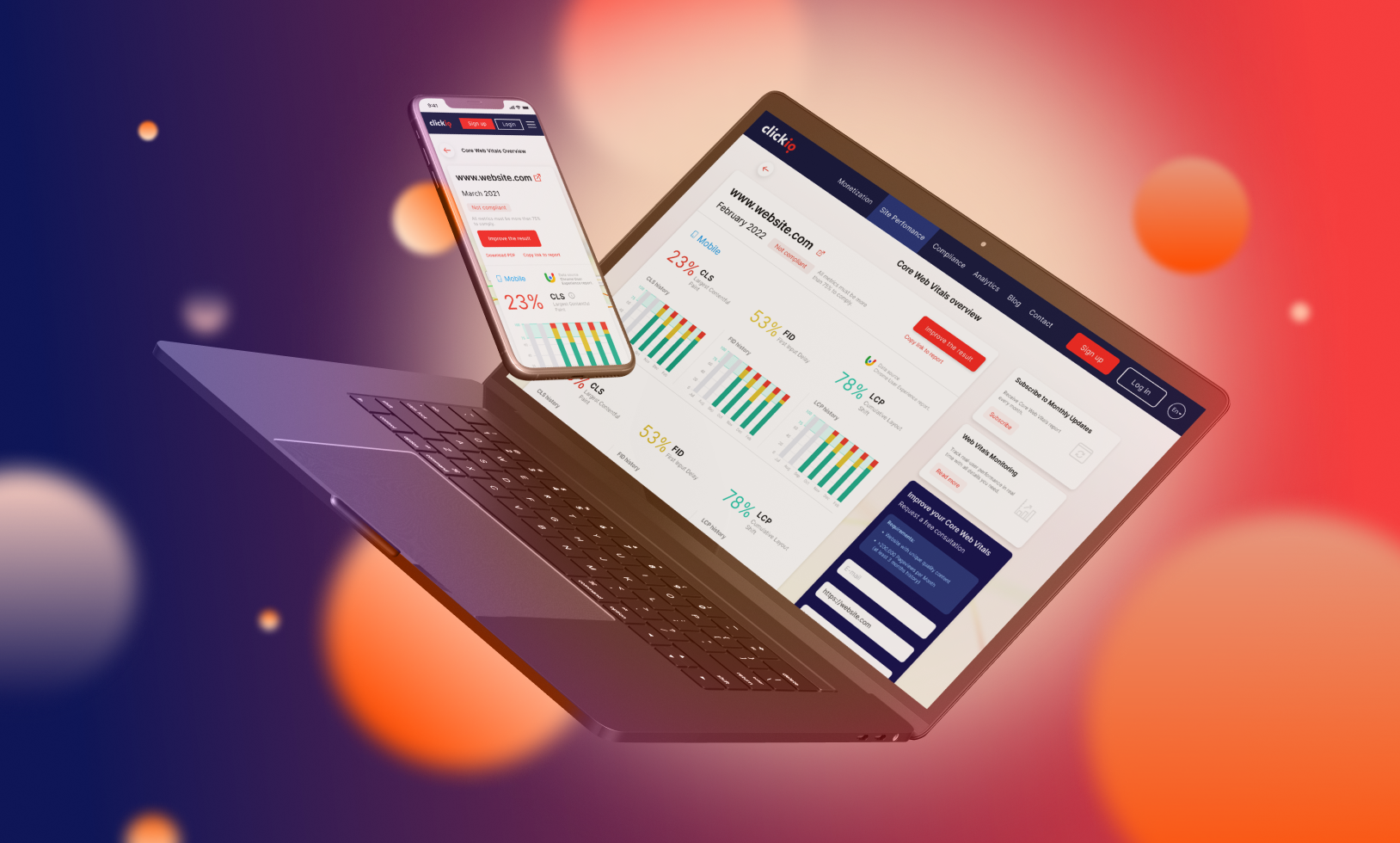Core Web Vitals – 4 reasons to set up real-user monitoring

Core Web Vitals are now a key factor in search rankings for both mobile and desktop, so effective monitoring is crucial to avoid a potential drop in traffic and revenue.
By now, you’re probably familiar with Core Web Vitals, Google’s metrics for assessing the user experience of a website (if not, you can learn more here). Since June 2021, they’ve been an important part of Google’s search algorithms for mobile, meaning sites that aren’t compliant with all three measures – LCP, FID (deprecated), INP, and CLS – could be losing out on traffic, and ultimately revenue. With Core Web Vitals rolling out to desktop from February 2022, they’re now becoming even more significant – so even sites which haven’t been affected yet could find that they soon are.
As we explained in this recent article for Search Engine Land , a drop in Core Web Vitals can come about quite suddenly due to seemingly insignificant changes to your site – and it’s often not immediately obvious there’s a problem. Only by setting up real-user monitoring of Core Web Vitals can publishers ensure they keep on top of the situation.
In particular, real-user monitoring is crucial for the following reasons:
1. Google says so
Despite giving site owners the option to measure their Core Web Vitals using its own tools, such as Search Console and the Chrome User Experience Report, even Google openly admits that this isn’t enough:
“The data provided by Chrome User Experience Report offers a quick way to assess the performance of sites, but it does not provide the detailed, per-page view telemetry that is often necessary to accurately diagnose, monitor, and quickly react to regressions. As a result, we strongly recommend that sites set up their own real-user monitoring.”
2. Track real user experience
Essentially, Google recognises that publishers need field data. In contrast to artificial lab data, this is based on real visits to your site and takes into account factors such as the location, device type and connection speed of your users. Since this field data is what Google bases its search rankings on, it’s important to use this to optimize your site. (You can read more about the difference between lab and field data here.)
3. Take action quickly
Real-user monitoring platforms are based on real-time data. This means publishers can see immediately how their site is performing and take action quickly – often before they get penalized in search rankings. Services such as Clickio Web Vitals Monitoring give you the option to set up email alerts – so you’re notified straight away if your site stops being compliant, or if your scores drop below a certain level.
4. Identify specific problems
Sometimes it’s not immediately obvious why your Core Web Vitals have dropped, so it’s helpful to be able to check your scores for different pages, devices, browsers and other variables. Only real-user monitoring enables you to drill down into the details and identify exactly what needs fixing on your site.
You can read more about the benefits of real-user monitoring, and how it has helped Clickio publishers to quickly fix issues impacting their user experience and revenues, in the full article in Search Engine Land.
Try Clickio Web Vitals Monitoring for free
Based on real-time, real-user data, Clickio Web Vitals Monitoring makes it easy to accurately measure your Core Web Vitals, and drill down into the detail of your results. The basic version of the service is available free of charge for any website, so why not give it a go?
If you’re already using the Clickio Platform, just go to the Web Vitals Monitoring tab to get set up. If you’re not already registered, click here to sign up now.
